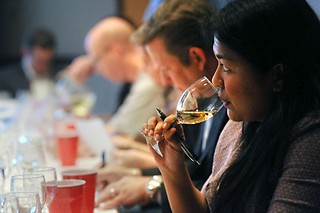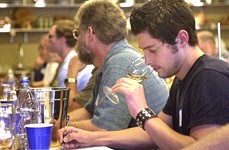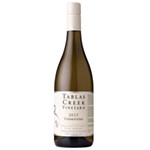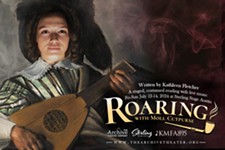Sipping From the Spigot, Vol. 2
The second Great Boxed-Wine Challenge, plus a very important lesson
By Wes Marshall, Fri., Nov. 18, 2011
We had 57 wines to taste and a crowd of distinguished tasters. The goal was to ferret out a few bag-in-a-box wines that are so good most of your friends would assume they were drinking high-quality bottled wine. Could any of the bag-in-a-box wines stand up to the judges' keen tastes and beat the bottled wines? Would any boxed wine be good enough to be crowned monarch of the 57 possibilities?
Our interest in finding a good boxed wine is based on several goals. First and foremost, who doesn't love a great glass of inexpensive wine? We were hoping to find a wine that played way above its class, one that could compete with much more expensive bottled wines. (Admittedly, it's a bit like panning for gold, but one can always hope.) We were also hoping to find a great boxed wine because most people don't finish every bottle of wine right away, and any partially consumed bottle of wine starts going bad the first night it sits. Given that bag-in-a-box wines are vacuum-sealed in inert plastics, an opened boxed wine will last much longer than an opened bottle of wine. In fact, it has been our experience that you can count on boxed wines lasting at least two weeks after you open them, sometimes longer.
The Procedure
The good news is one boxed wine did indeed reign supreme. But to understand what an incredible win that was, you have to understand our procedure. We had 15 tasters. Among them were master sommeliers, winemakers, winners of the Texas' Best Sommelier Competition, restaurant owners, retailers, distributors, consumers, a radio host, and a writer. We tasted wine by varietal flights in this order: Pinot Grigio, Sauvignon Blanc, Chardonnay, mixed whites, Pinot Noir, red blends and various reds, Merlot, Cabernet Sauvignon, and Syrah/Shiraz. Each flight included both bottled and boxed wines with the goal of keeping the tasters on their toes. They couldn't say, "Well, it's all right for a boxed wine," because it might be a bottled wine. Some flights were just one bottle; some included as many as three. The wines were randomly ordered and completely unknown to both the tasting panel and the servers.
Double-blind tests are the gold standard of product testing, so that's how we set up our tasting. In order for a test to be double blind, neither the person tasting nor the person serving can know the identity of the wine, so we had one poor soul (my wife) pouring all those wines into pitchers, then two servers, Margaret Shugart and Martin Aechternacht, serving from those pitchers without knowing what they were pouring. The only labels used were the numerals 1-8 on the pitchers and the glasses indicating a wine's position in the flight. Each taster gave every wine in the flight a score, then went back and picked which wines placed first through fourth. The pourer kept track of the wines, and at the end of each round, Stephen Aechternacht added up the scores; only then did we reveal the wines. Then, at the end, we picked the two winners – red and white – for the entire contest.
Despite keeping the wines a secret so the panel would never know if they were drinking a bottled wine or a boxed wine, with such an erudite tasting panel (see "The Panel," below), most of the winners were wines in bottles. That is as it should be. The bottles ranged in cost to as much as $43 a bottle, while the average cost of a bottle's worth of the boxed wines was about $5. One would hope that, at the price, the bottles would always win. But we wanted to pit the boxed wines against almost impossible odds to see if any would rise to the top. And one did.
A Vitally Important Lesson
As we tasted the wines, one problem reared its ugly head. After a few rounds, we were getting discouraged because so many of the wines tasted awful. This was unlike the last taste-off four years ago, when most of the wines were at least palatable. The biggest problem was oxidation. Wine, when exposed to oxygen, basically rusts. It starts to taste old and worn out. Both white and red wines turn brown. This process starts the moment you uncork a bottle of wine. That's why that bottle of Riesling that your granny has kept on her kitchen counter since last Thanksgiving now looks like motor oil. But we all thought one of the beauties of bag-in-a-box wine was that it resists damage from both light and oxygen. What happened?
Luckily, Devon Broglie, a master sommelier who works for Whole Foods, had intimate experience with boxed wines. "We tried making box wines a few years ago in our Whole Foods 365 line and found out that these bags really are slightly permeable," he said. "Oxygen does get in the wines, and they don't last forever on the shelves." Then he pointed us to the bottom of the boxes. Turns out all these box wines have a date on the bottom. The verbiage varies, but it will say something like "packed on" or "freshest before." Sure enough, the worst wines we tasted were also the oldest wines. Some Australian wines had been packed as far back as 2008, and they were uniformly undrinkable. On the other hand, the Black Box Chardonnay, my pick for best Chardonnay, had been packed on Aug. 18. It wasn't even three months old.
So how old is OK? I asked the crew at Bota Box, one of the other high-rating box wineries. They use the "freshest before" label, and the easy way with their system is to go back a year. If it says "freshest before November 17, 2012," it was packaged on Nov. 17, 2011. Why a year? "Our Quality Control department has run extensive tests on the 3L package (i.e. box wine) which show that the wine stays fresh for 14 months," said Holly Evans, director of public relations. "However, we feel it best to be conservative and go with 12 months." Broglie said that after Whole Foods' testing of their wines, he preferred six months as the sell-by date. In either case, be aware of the age of your boxed wine before you buy. It turned out that the two best predictors of the quality of the wines were which company made them and the date on the bottom of the box. Interestingly, those two variables seemed to be interactive. We often liked specific brands because they were young.
The Winners
So who won? Congratulations for the top pick to the McManis family of Ripon, Calif. Their winery is about 80 miles east of San Francisco in warm central California. The McManises have been California farmers for generations, and it is nice to see a smallish family business place at the top of our list, especially since the boxed-wine business is dominated by huge wineries. The McManises' Jack Tone Vineyards Red Wine ($20) was the clear competition winner. It's a delicious combination of Syrah and Petite Sirah and was the only boxed wine to soundly defeat the bottled wines in its category. What makes this victory even sweeter is that we sneakily threw three bottled wines into the eight-bottle flight, all of which retail for more than $20, and the Jack Tone Vineyards Red Wine still won. At the end, when we polled the panel, the McManises' wine was almost unanimously picked as the winner of the entire tasting.
Second place went to Big House's Unchained Naked Chardonnay ($20), and it was just a squeak away from beating a quite expensive bottled wine. As you might guess by the name, this is a Chardonnay that is fermented and aged in stainless steel. The Big House winemakers use no oak barrels whatsoever, lending the wine a cleaner, more food-friendly flavor. This Soledad, Calif., winery is widely distributed, so it's easy to find, and it turned out to be a high-ranking winery throughout.
News You Can Use at the Store
Our picks for the best brands overall are important to know, but equally important is the date on the bottom of the box. If any of these were packed, bottled, or otherwise placed in their containers more than six months ago, ask if you can return it if isn't up to your standards. If it's more than a year old, pass up even the best brands.
Both of Jack Tone Vineyards' wines, a white and a red, placed high enough that I can confidently recommend either. You could empty a bottle of $25-plus American red wine, fill it from the spigot with the Jack Tone red and serve it without anyone knowing the difference. The white is a blend of Pinot Grigio, Chardonnay, and Muscat. It's nicely aromatic and almost floral smelling, quite nice for quaffing. Jack Tone wines are available at Whole Foods, some Twin Liquors locations, and Whip In.
We also found that Big House wines and Bota Box wines were generally dependable. Bota's Cabernet Sauvignon received good scores, as did its Pinot Grigio. In fact, Bota Box Cabernet beat our winner from last time, Powers 2003 Columbia Valley Cabernet Sauvignon. Big House's Chardonnay obviously scored high enough to be one of the winners, but we can also recommend its red. I personally liked the Black Box Wines Chardonnay because it was just slightly reminiscent of Chablis, though my colleagues were less enamored. Both the Big House and Bota Box wines are widely available at both fine wine shops and grocery stores all over town.
Finally, Some Gratitude
Putting on a tasting of this scale is never easy. I'd like to thank the Four Seasons Hotel and its staff for making this such a smooth-running operation. Sommelier Mark Sayre was in charge, and the whole process could not have been better. Every year, the Four Seasons does so much to help the food and wine industries in Austin, and it never gets enough credit, so a great big thank you. Thanks also to the tasting panel judges for their time and expertise. As I looked around at the brain power, I felt a sense of pride in what has happened in Texas' wine world over the last decade. We have so many people to be proud of. Finally, thanks to our servers, Margaret Shugart and Martin Aechternacht, both of whom could have been making money but instead helped us. Thanks to Emily for pouring and keeping track, and to Martin's father, Stephen, for keeping score.
The Panel
Our panel of judges was about as good as they come. In alphabetical order by last name, we had:
Stan Adams, owner of Siena Ristorante Toscana and three Brick Oven pizzerias
Brenda Audino, corporate wine manager and education director for Twin Liquors, a certified wine specialist and accredited sommelier by the International Sommelier Guild
Devon Broglie, master sommelier and coordinator of all specialty products for Whole Foods Market's Southwest region; Broglie also won the Texas' Best Sommelier Competition in 2006
Crutch Crutchfield, consumer and founding member of one of Austin's oldest and most renowned tasting groups, the Original Zinners
Lisa Fox, owner of Asti and Fino, both perennial Austin Chronicle Restaurant Poll favorites
Dan Gatlin, owner and winemaker at Inwood Estates Vineyards, widely considered one of Texas' top wineries
Susan Gayle, consumer, self-anointed Queen of Spoons, host of Food Love Austin (Thursdays at 2pm on KOOP 91.7FM), and expert on backyard chicken coops
Wes Marshall, your current writer, a regular contributor to The Austin Chronicle, and author of What's a Wine Lover To Do? (Artisan) and The Wine Roads of Texas (Maverick)
Don Pullum, owner of Akashic Vineyard and winemaker for Sandstone Cellars Winery, Torre di Pietra Winery, Junction Rivers Winery, and Pontotoc Vineyard Winery; Edgar Cayce's fifth cousin, thrice removed
Dan Redman, wine broker and owner of Mosaic Wine Group and Certified Specialist of Wine
June Rodil, beverage director of Congress (including Second Bar + Kitchen, Bar Congress, and Congress), Texas' Best Sommelier 2009, and a Wine & Spirits magazine Best New Sommelier 2011
Darcy Sacks, manager at the Austin Wine Merchant, previously of the Wine and Food Foundation of Texas and Spicewood Vineyards
Mark Sayre, sommelier for TRIO at the Four Seasons, Texas' Best Sommelier 2007, and a Wine & Spirits magazine Best New Sommelier 2010; Mark was also the host of our event
James Tidwell, master sommelier, beverage manager for the Four Seasons Resort and Club in Dallas, co-founder of the Texas Sommelier Conference and Texas Sommelier Association, certified wine educator and James Beard Foundation Award semifinalist in 2011 for Outstanding Wine Service
Steve Tipton, consumer and wine collector; in his spare time, he's a board-certified attorney in personal injury trial law, civil appellate law, and workers' compensation law










